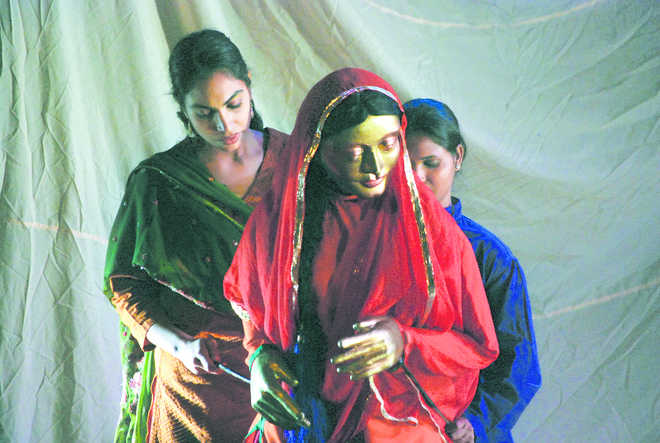
Tough task: The puppeteer says the biggest challenge is that no one in India understands or writes exclusively for puppet theatre
Neha Kirpal
Ishara Puppet Theatre, India’s leading platform for Indian and international puppetry, recently celebrated its 13th anniversary. Its founder Dadi Pudumjee has made an immense contribution to the art through his almost four-decade-long journey as India’s master puppeteer.
Dadi’s puppetry goes beyond the usual string and hand-puppets to “semi-sculptural puppets” attached to actors’ bodies and carried across stage. According to him, puppets do not need long spoken text lines. The puppet must emote through its movement, manipulation and actions to synergise with spoken text if used.
“Music can also be text as it is in many of my performances,” he adds. Needless to say, there are several challenges involved in adapting traditional Indian theatre, like the story of Ram and Sita or the adventures of Vikram and Betaal, into a puppetry format, as every story has to be adapted to the medium. Dadi says the main problem is that there are no people in India yet who understand or write only for puppet theatre.
For some time now, he has used a recorded poem or narration. Heer Ke Waris, based on Heer-Ranjha, was a major play that was scripted. It was written by Mahip Singh, who discussed the various scenes and ideas with Dadi and what the puppets are capable of projecting within a story. The latest at the Ishara Puppet festival in February was based on a children’s award-winning book Gone Grandmother by Chatura Rao. The version in Hindi, Where Has My Nani Gone, was improvised by the group as they went along creating dialogues and actions with the puppets and actors.
As one of India’s leading modern puppet companies, Ishara creates puppet events, conducts workshops and performances on social awareness themes for students, teachers and adults.
“Our most recent one was a shadow play on water,” says Dadi. Recently, they also conducted through Spicmacy, a workshop for almost 90 participants. In August, they are likely to have a workshop on creating elephant puppets using shadow or other techniques.
Perhaps their greatest moment was in 2014, when Ishara created puppets for the opera, A Flowering Tree, directed by Vishal Bhardwaj at the Theatre du Chatelet Paris as well as puppets for the song sequence “Bismil” in the film Haider. “Working with choreographer Sudesh Adhana on the song was really exceptional and exciting,” says Dadi.
But not all of Ishara’s performances are light entertainment. Some also address sensitive issues and themes such as HIV/AIDS and substance use. Their HIV project, a collaboration with Unesco and the EU in the mid-2000 years, raised issues related to modes of transmission and what one should be aware of, discrimination faced by HIV persons, substance addiction and peer pressure among the youth.
“All this was done using puppets, masks and actors — whatever we could use to best tell what we wanted to in several situations of performing spaces, streets, bastis, NGOs and schools,” says Dadi. The project also trained many others in the use of puppet theatre for social message performances in various cities, especially in Nagaland.
Ishara has also held workshops and trained community workers of Save the Children, Myanmar, in the use of puppetry in their communities, tackling disability issues, education and discrimination due to physical disability. They have also worked extensively with street children, including the Salaam Baalak Trust project (2007) for Unesco Paris and the EU on projects. According to Dadi, the ripple effect has been tremendous. “They have gone on to creating their own lives, puppet groups, in TV shows (Gali Gali Sim Sim is the Indian version of Sesame Street), puppeteers, dancers and workshop trainers for children and adults.”
But much more still needs to be done to revive puppetry in the country and continue to keep it alive and thriving. Even though Dadi feels that we definitely have more traditional puppet theatre in India compared to the urban-based modern puppet theatres, the government needs to be far more aware of the situation — not just sponsoring festivals and performances but setting up a permanent puppet collections museum; workshops and education programmes for puppeteers, artists and persons interested; a platform and nurturing to showcase good performances both traditional and modern; and to upgrade skills and production quality of traditional and young puppeteers.
To some extent, the Sangeet Natak Academy and the Union Internationale de la Marionnette India have been striving for the same, he says. “Hopefully, the Bhartiya Lok Kala Mandal in Udaipur will see a renaissance as one of the major steadfast puppet centres in the country. We must acknowledge the work of the many artists hidden in various corners of the country. The Sangeet Natak Academy gives awards for the same but an impetus also needs to be given to the younger generation to create and carry on,” adds Dadi.



























